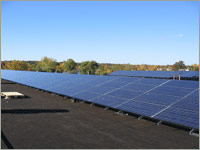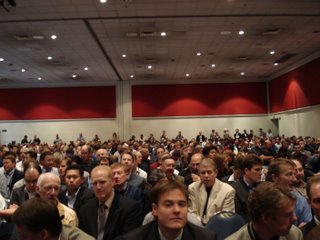Greasecar TDI Edition: Part 2
 "The diesel engine can be fed with vegetable oils and would help considerably in the development of agriculture of the countries which use it... The use of vegetable oils for engine fuels may seem insignificant today. But such oils may become in course of time as important as petroleum and the coal tar products of the present time."
"The diesel engine can be fed with vegetable oils and would help considerably in the development of agriculture of the countries which use it... The use of vegetable oils for engine fuels may seem insignificant today. But such oils may become in course of time as important as petroleum and the coal tar products of the present time."-Rudolf Diesel, 1911
This quote (featured on the web sites of a lot of vegetable fuel systems) amazes me every time I think about it. Talk about someone being ahead of his time - the fact that Rudolph Diesel said this nearly 100 years ago, and it carries more truth today than ever before is astounding. It's a little known fact that the diesel engine was invented to run on vegetable oils - fuels made from entirely renewable resources that have less carbon emissions, less particulates, and less carcinogens than anything else on the road. It didn't take long before the diesel concept was hijacked by the petroleum industry, but if you ever hear somebody speaking skeptically about diesel vehicles being able to safely run on vegetable oil, just tell them that's what it was invented for.
 Anyway, apologies for the digression. The install is finally finished. This whole jumble of fuel lines may look like a rat's nest, but there's a method to the madness. You can see the fuel selector valves that switch from diesel to veggie are mounted on the front frame. The 10 micron veggie filter housing is mounted to the left of the battery box, and is surrounded by copper tubing filled with hot radiator fluid. The red hoses carry the fuel and coolant lines to the tank in back of the car.
Anyway, apologies for the digression. The install is finally finished. This whole jumble of fuel lines may look like a rat's nest, but there's a method to the madness. You can see the fuel selector valves that switch from diesel to veggie are mounted on the front frame. The 10 micron veggie filter housing is mounted to the left of the battery box, and is surrounded by copper tubing filled with hot radiator fluid. The red hoses carry the fuel and coolant lines to the tank in back of the car. The myriad of wires are for the computer system that mounts on the dashboard. Another reason I went with the Greasecar kit is because I really like this concept. The "Co-Pilot" monitors the engine and oil temperatures to take the guesswork out of switching over. The temperature sensors are programmable and tell you exactly when the coolant and oil is hot enough. The computer also helps you regulate the purge cycle and gives you an alarm sound if you try to shut the engine off without ecompletely flushing out the vegetable oil.
This is what everything looks like in the end with the engine cover  back on. I'm not running on vegetable oil just yet. I want to take a few days to monitor all the fuel and coolant lines to check for loose connections and air leaks before I start trying to run on veggie. But by the end of the week I'll be running on the cleanest fuel on the road - 100% renewable and not made in the Middle East.
back on. I'm not running on vegetable oil just yet. I want to take a few days to monitor all the fuel and coolant lines to check for loose connections and air leaks before I start trying to run on veggie. But by the end of the week I'll be running on the cleanest fuel on the road - 100% renewable and not made in the Middle East.
 back on. I'm not running on vegetable oil just yet. I want to take a few days to monitor all the fuel and coolant lines to check for loose connections and air leaks before I start trying to run on veggie. But by the end of the week I'll be running on the cleanest fuel on the road - 100% renewable and not made in the Middle East.
back on. I'm not running on vegetable oil just yet. I want to take a few days to monitor all the fuel and coolant lines to check for loose connections and air leaks before I start trying to run on veggie. But by the end of the week I'll be running on the cleanest fuel on the road - 100% renewable and not made in the Middle East.The conversion has been an incredibly rewarding experience, and the process doesn't end here. The technology is still in its infancy, and as companies put out all kinds of new products and auxilliary heaters - flat plate heat exchangers, in-line heaters, 12V DC and 120V AC heaters for running veggie in the winter - I'll continue to read up in the forums and web sites and expand the system accordingly. I've truly caught the bug, and I'm now fascinated by this stuff. If any of you are thinking about doing this yourself, let me know if I can be of any assistance.
Otherwise, I hope to see many of you soon when I embark on my magical veggie mystery tour over the next few months.
Stay tuned...



















